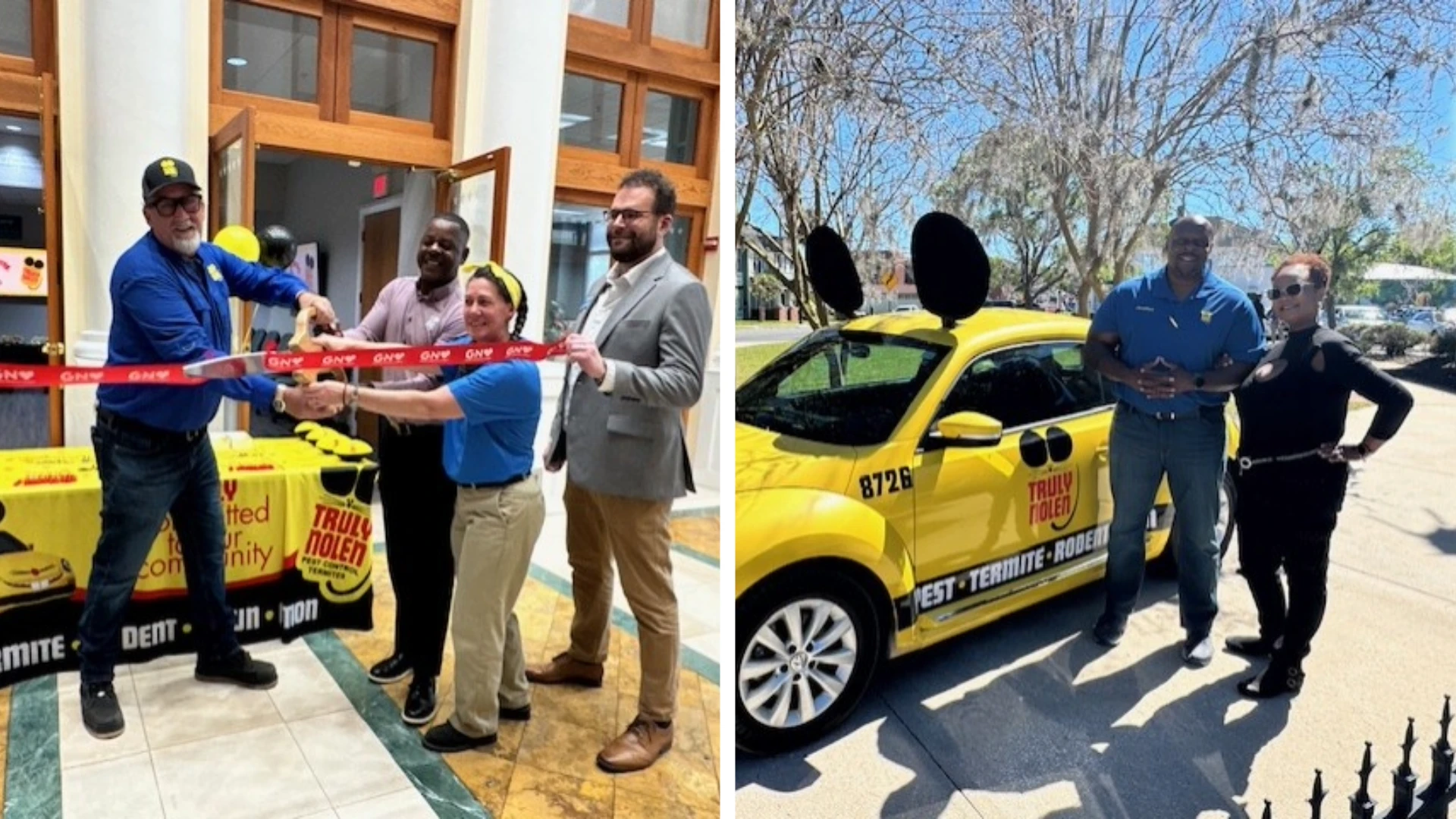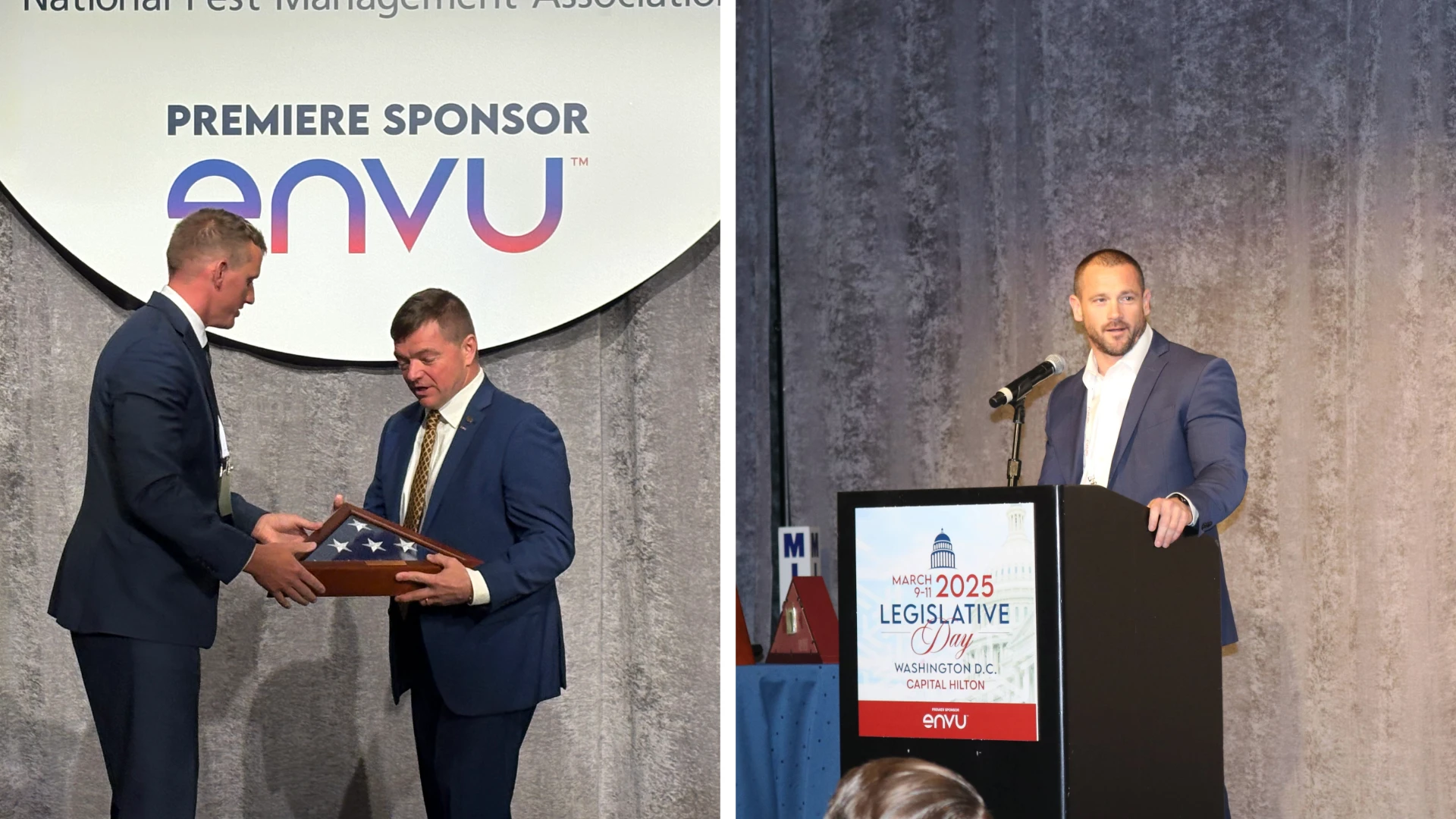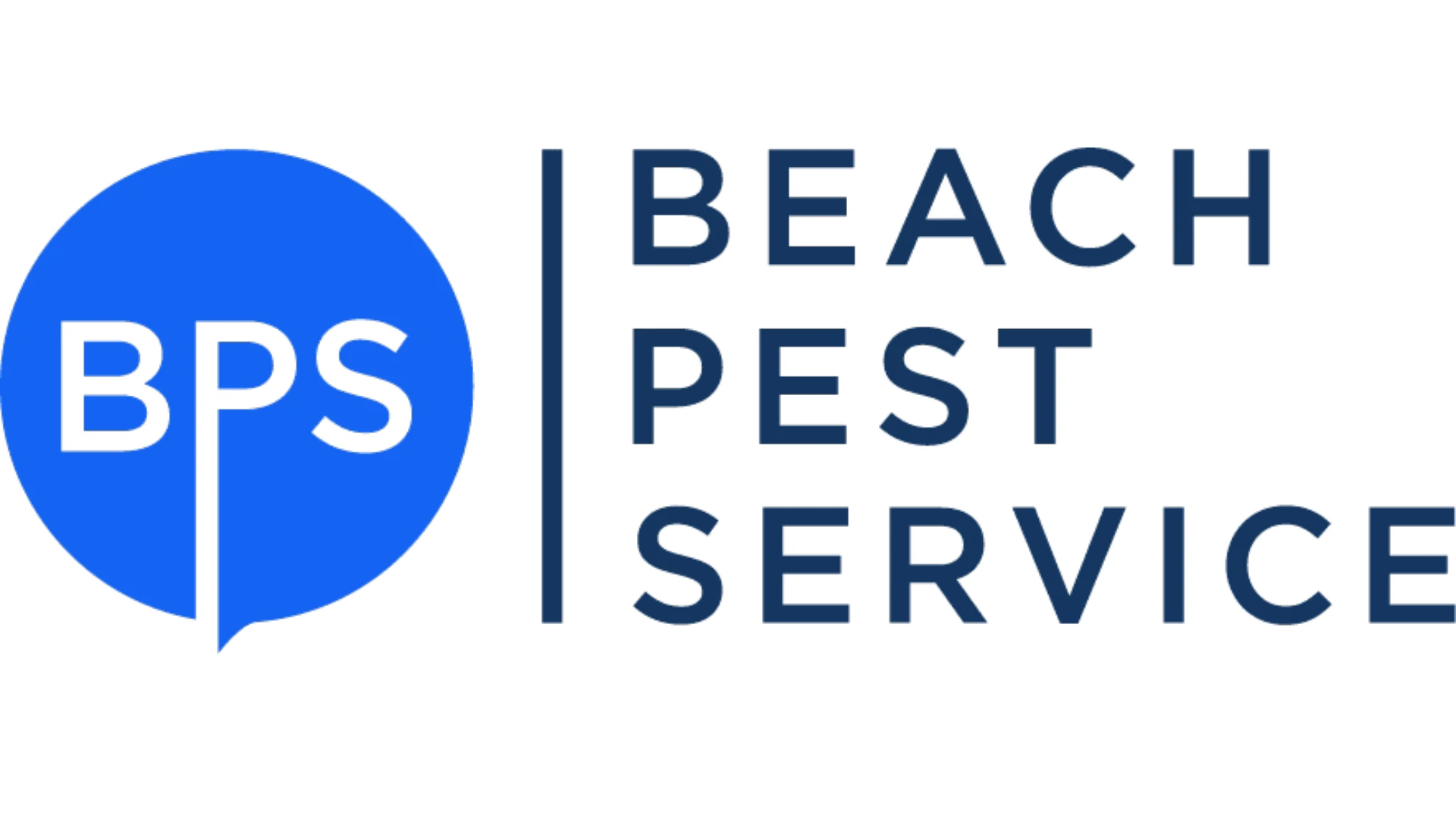With the assistance of nearly 100 cooperating PCOs from around the country, DowElanco began an ambitious round of commercial field trials in January 1994 to test the effectiveness of its Sentricon* Colony Elimination System against a
broad range of subterranean termite species and pressures, soil types and climate conditions.
In addition, ongoing trials have provided DowElanco the opportunity to evaluate the effectiveness of its PCO training program and support for the Sentricon System, which is the first of several termite bait products that are expected to be introduced to the pest control market in the next few years.
This latest round of commercial field trials follows more than a year of extensive testing of the Sentricon System by several university cooperators, researchers for the U.S. Department of Agriculture Forest Service, and DowElanco technical service and development specialists. The commercial trials have been conducted under the direction of seven DowElanco specialists for Sentricon and have been overseen by Sterett Robertson, product development manager for Sentricon, and Reid Sprenkel, business development manager for new technologies. In the trials, cooperating pest control companies have been using the Sentricon System at their customers' homes or commercial properties, many of which have "worst-case scenario" termite problems.
IN THE WEST. To test the effectiveness of Sentricon in the harshest of environments, DowElanco established 47 commercial sites in the West with the help of 12 pest control companies throughout Arizona and California.
One of several sites where colony elimination has been achieved is a home in Chula Vista, Calif., treated by Lloyd Pest Control of San Diego. On April 11, 1994, 24 Sentricon stations were placed around the home and other areas of the property where termite activity was noted or suspected. A month later, on May 12, five stations were hit by western subterranean termites (Reticulitermes hesperus).
With assistance from DowElanco Sentricon specialist Steve Fleming, baiting began on August 19, when the monitoring devices of the five hit stations were replaced with Baitube devices containing Recruit* termite bait with the DowElanco insect growth regulator (IGR) hexaflumuron. Subsequent monthly inspections of the stations confirmed the visible signs that hexaflumuron was starting to take effect on members of the colony. On November 23, after three months of active baiting, no termites were found. Since then no termite activity has been detected and the colony is considered eliminated.
"The sites we've selected feature just about every construction and soil type possible from homes built on the side of a cliff on Camel Back Mountain in Phoenix to crawl space homes in the sandy loam soil of southern California's flood plain," Fleming noted. "These are really nightmare homes homes that have had recurring termite problems for years. For whatever reason, control with traditional chemical barrier treatments has been difficult to achieve."
One of the most important lessons DowElanco has been learning from the commercial field trials is how the foraging behaviors of various termite species are affected by different geographies and climates in urban settings, and how those differences may influence the way Sentricon works. In Arizona, most station hits occurred in spring and fall, when cooler temperatures and seasonal rains combined to create a more hospitable environment for foraging termites.
"In the summer months, when air and soil temperatures reach well above 100 degrees, it's just too hot for foraging termites," Fleming explained. "Conversely, in the winter months when it snows in the higher elevations, extremely cold soil temperatures will again discourage foraging. There was a lot of heavy baiting going on just before winter, so I suspect as the weather starts warming up this spring, and as termite activity picks up again, we're going to see that some more colonies have been eliminated."
IN THE SOUTHEAST. In 1994, 51 commercial field trial sites were established in Florida with the help of 14 pest control companies throughout the state, predominantly in central Florida and along the eastern coastline. Of the first sites established in February and March 1994, nearly all have achieved colony elimination, some as soon as six weeks after baiting with Recruit termite bait.
"It's been a great learning experience," said Sid Funk, a DowElanco specialist for Sentricon based in Florida. "We found some of the sites had multiple colonies, and others had new colonies moving in. In addition, for several months this past summer we were hampered by heavy rains that flooded some of the stations. It's been a real challenge for everyone involved, but we were able to learn a lot of valuable information on how Sentricon can be used successfully across the board."
The sites selected for participation in the Florida commercial field trials included structures of all sizes and construction types from a pump house in north central Florida to a large shopping center in Palm Beach. Typical soil conditions at these sites were sand and sandy loam soils, although some sites in southeast Florida were built on coral rock.
"For the most part, our trials in Florida have been with the southeastern subterranea n termite (Reticulitermes virginicus) and the eastern subterranean termite (Reticulitermes flavipes), although we have one ongoing site now with Formosan subterranean termites (Coptotermes formonsanus)," Funk said. "With the exception of four structures, all of the 51 sites have had persistent problems with subterranean termites over the years."
For most of the sites in the Florida commercial field trials, termite activity in Sentricon stations has typically occurred within one month after stations are placed around a structure with an existing infestation. That activity has generally ranged from 20% of the stations at a particular site being attacked to one site that recorded activity in 75% of its stations.
IN THE NORTHEAST. Since April 1994, 30 commercial field trial sites have been established in the Northeast under the direction of DowElanco Sentricon specialist Michael Gelhaus. "Most of the structures were hit within the first two to three months," Gelhaus reported. "Among all sites, the most actively hit was a school in Maine, where eight out of 37 stations were hit and baited. That's unusual, because Maine isn't known as a high termite-pressure area."
Despite a few sites still waiting to record their first hit, the Sentricon System has found success in New York and New Jersey, where a majority of DowElanco's commercial field trial sites in the Northeast are located. Typically, the sites are situated in sandy or sandy loam soils, with the exception of two sites in Pittsburgh that were built in soil with a very high clay content.
"Most of the homes were crawl space or full basement construction that had previous barrier treatments," Gelhaus noted. "Some of these structures have field stone foundations, which made it tough on barrier treatments because of all the voids. Another one of the structures has a stream running through its basement, and several others had wells or streams running next to the property. For situations like these, where a barrier treatment just can't be done, using a technology like Sentricon is really your only treatment option."
IN THE SOUTHWEST. DowElanco, in cooperation with 14 participating pest control companies, has established 53 commercial field sites in a five-state region that includes Texas, Mississippi, Arkansas, Louisiana and Tennessee. Several sites have already achieved colony elimination.
One of the advantages of the Sentricon System is its ability to target all subterranean species of economic importance. As with commercial field trials in other parts of the country, Sentricon is continuing to demonstrate its usefulness against both Formosan and eastern subterranean termites in the Southwest with relative ease, despite some occasionally unpredictable variables.
"Generally with Formosans we've had substantial hits within the first seven to 14 days after stations are in the ground, with a few instances where it's taken up to a month," said Ron Martinez, a DowElanco specialist for Sentricon based in Bergheim, Texas. "Once baited, consumption of Recruit termite bait was very good until we ran into the rainy season, when stations got flooded or infested with fire ants, or when the termites were disturbed by checking the stations too frequently. As a result of those experiences, we've developed some guidelines for avoiding flood-prone areas, dealing with fire ants in stations, and identifying appropriate intervals for checking stations so as to further improve how Sentricon is used."
With eastern subterranean termites, hits have typically occurred four to eight weeks after installation of the stations. As a general rule, Martinez would wait up to six or eight weeks before checking stations for the first time to ensure the termites would have plenty of time to find and accept the monitoring devices as a food source. With Formosan subterranean termites being more aggressive foragers, the first check of the monitoring device came sooner.
IN THE MIDWEST. Under the direction of DowElanco Sentricon specialist Bill Blue, 10 companies from Columbus, Ohio to Kansas City, Mo. have been among the first group of pest control operators to put Sentricon to the test with 45 commercial field sites in the Midwest.
"Among the 45 sites we've established, we've already eliminated colonies at a number of sites and those are just confirmed eliminations going into this past winter," Blue reported. "We'll know if more colonies at other sites have been eliminated by the time swarm season rolls around this year. We're not just talking about eliminated colonies, either. These are eliminated sites, since in several cases there was more than one colony affecting those sites."
Sites selected for the commercial field trials in the Midwest were split evenly among structures built on either slab, crawl space or full basement foundations, or any combination thereof.
"As anyone knows, treating a full basement with liquid termiticides is a real challenge," Blue said. "The label for most liquids requires you to put termiticide right down to the footings, and it's tough to get a liquid that far down. With Sentricon, you don't have to worry about that."
ON THE EAST COAST. DowElanco and cooperating PCOs established 66 commercial field trial sites in Maryland, Virginia, West Virginia, North Carolina, South Carolina, Tennessee, Georgia and Alabama throughout 1994. Termites have attacked 50 sites and, to date, 45 of those sites are being actively baited.
"Right now, we've already confirmed several site eliminations in this part of the country, many of which involved more than one termite colony," said Bruce Sevener, a DowElanco specialist for Sentricon based in Monroe, N.C. "We've also been seeing a definite trend toward colony elimination at several more sites even though colder winter weather has hit in the northern areas, and we are currently continuing baiting in the southern part of this area, even with temperatures in the 35- to 40-degree range. Termite activity here hasn't stopped, but it has slowed down considerably. We expect to confirm additional colony eliminations as the weather begins to warm up."
As Sevener pointed out, one of the benefits Sentricon offers is its ability to be used around difficult types of structures and in many varied soil conditions. Sites where Sentricon is being evaluated include a beachfront high-rise condominium complex; several large commercial warehouses; and an administrative building at the University of North Carolina.
IN HAWAII. Hawaii is more than just a final destination and vacation spot for winter-weary travelers it's also an island paradise for one of the largest concentrations of Formosan subterranean termites in the United States. Of the 31 commercial field trial sites established throughout the year under the direction of DowElanco Sentricon specialist Jane Arakaki, baiting has been initiated at all but two of the sites. Fifteen of the sites have already achieved colony elimination, while the other 14 are still being actively baited.
"The two remaining homes we're monitoring don't have active termites right now, so we're using Sentricon as a preventive tool on those properties," Arakaki said. "Other homes used in our studies have had two or three pest control companies just walk away from the job simply because it was a losing battle. They couldn't control the termites. These are the same homes in which we've totally eliminated entire colonies."
Because of the aggressive foraging be havior of Formosan subterranean termites, the first check of a site's stations has typically occurred 20 days after installing stations on sites where there is an infestation known to be attacking the structure. Once baited, the stations were typically checked every seven to 10 days to prevent these aggressive feeders from completely devouring the Recruit bait before it could be replaced.
COMMERCIAL SPRINGBOARD. According to Sterett Robertson, information obtained from these ongoing commercial field trials will greatly aid DowElanco's preparation for its managed introduction of Sentricon this year. Because the Sentricon System protects structures in a new and radically different way, DowElanco will continue to evaluate results from the commercial field trials to ensure there is complete understanding of its technology as it is commercialized.
"The purpose of these field trials is to gain practical field experience and to demonstrate the effectiveness of Sentricon across a broad range of termite species, termite pressures, geographies and climates," Robertson said. "The data we've collected so far shows that Sentricon does indeed eliminate entire subterranean termite colonies.
"Our university cooperators documented the ability of Sentricon to eliminate subterranean termite colonies through the use of triple mark-recapture studies," Robertson explained. "That research, coupled with our ongoing commercial field trials, have helped lay the groundwork for proving the unmatched efficacy of the Sentricon System."
The field trials have also demonstrated that Sentricon is a tool that PCOs can understand and use successfully, Robertson added. Likewise, this technology is earning a high degree of acceptance from homeowners involved in the trials.
As part of the managed introduction of Sentricon, PCOs involved in the commercial field trials will continue to undergo training on the use of Sentricon as they begin limited commercialization of Sentricon in 1995.
|
THE PROOF: TRIPLE-MARK RECAPTUREHow can pest control operators be sure the Sentricon Colony Elimination System actually eliminates subterranean termite colonies? The answer lies in the triple mark-recapture (TMR) procedure used by university researchers to test the effectiveness of Sentricon in several field trials conducted in 1993 and 1994. TMR is not a new idea. For years, biologists and population ecologists all over the world have used this statistical method as the standard for the study of animal field populations. Its ability to accurately characterize a population without capturing every individual member makes it an ideal tool for studying the large and relatively inaccessible populations characteristic of termite colonies. Applying the TMR procedure not only reveals the foraging area of a termite colony, but also provides an estimate of the total number of foraging termites in a colony's population. This is accomplished by collecting and marking a known number of termites, releasing them back into the population, then recapturing another random sample group of termites and counting the number of marked and unmarked individuals in the sample group. Using statistical calculations based on how many individuals were originally marked and released, the ratio of marked and unmarked individuals in the next sample population can then be used to accurately estimate the total population of a subterranean termite colony. By determining the colony's foraging territory and its population before Sentricon was used, researchers then felt confident the colony had been eliminated, not just displaced or reduced, as a result of using Sentricon. In addition to determining a colony's territory and estimating the number of foraging termites, the triple mark-recapture procedure also enables researchers to measure a colony's level of activity by recording the rate of wood consumption. This information has helped DowElanco establish guidelines for pest control operators to follow to determine when a colony has been eliminated. |
The foregoing article and accompanying photographs were provided to Pest Control Technology magazine by Bader Rutter & Associates, Brookfield, Wis.

Explore the April 1995 Issue
Check out more from this issue and find your next story to read.
Latest from Pest Control Technology
- Understanding Rodents and Bird Flu
- Green Pest Solutions Awards Safest Driver New 2025 Ford F150
- UF/IFAS Sheds Light on Tiny Invaders During Termite Awareness Week
- Registration Open for Lawn & Landscape Technology Conference
- Fleetio Launches Automotive Service Excellence Scholarship
- WorkWave Appoints John Phelan as CTO
- PMPs Use Capitol Hill Visits to Push for Preemption
- 20 Trapping Tips





